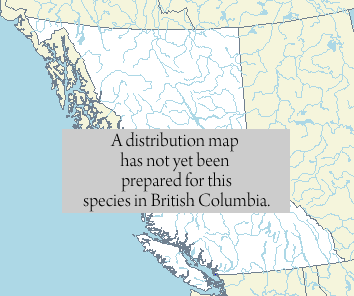Adult male Northern Fur Seals are much larger than females, attaining a length of 1.9m (6 ft) and weight of 200 kg (450 lbs) compared to 1.3 m (4 ft) and 35 kg (80 lbs) for females. Pups weigh 4.5-5.5 kg (10 – 12 lbs) at birth and are nursed for 4 months, during which time they increase 2 – 3 fold in weight. Females can live to about 25 years wheras males rarely live longer than 15 years. The pelage of both sexes is greyish brown and includes a dense layer of underfur.
Callorhinus ursinus (Linnaeus, 1758)
Northern Fur Seal
Family: Otariidae
Northern Fur Seal
Family: Otariidae
Species account authors: Peter Olesiuk and Michael Bigg
Extracted from Marine Mammals of British Columbia, Department of Fisheries and Oceans.
Extracted from Marine Mammals of British Columbia, Department of Fisheries and Oceans.
Photograph
© Don Getty (Photo ID #5702)
Map

Species Information
Biology
|
Distribution
|
Status Information
BC Ministry of Environment: BC Species and Ecosystems Explorer--the authoritative source for conservation information in British Columbia. |
Additional Notes
|
Taxonomic and Nomenclatural Links
Additional Range and Status Information Links
Additional Photo Sources
Species References
|
References for the Additonal Notes: COSEWIC. 2006. Northern Fur Seal Assessment Summary. Committee on the Status of Endangered Wildlife in Canada. Available online. DFO. 2007. Recovery Potential Assessment for Northern Fur Seals (Callorhinus ursinus). DFO Canadian Science Advisory Secretariat, Science Advisory Report 2007/052. 2007/052. Available online . |